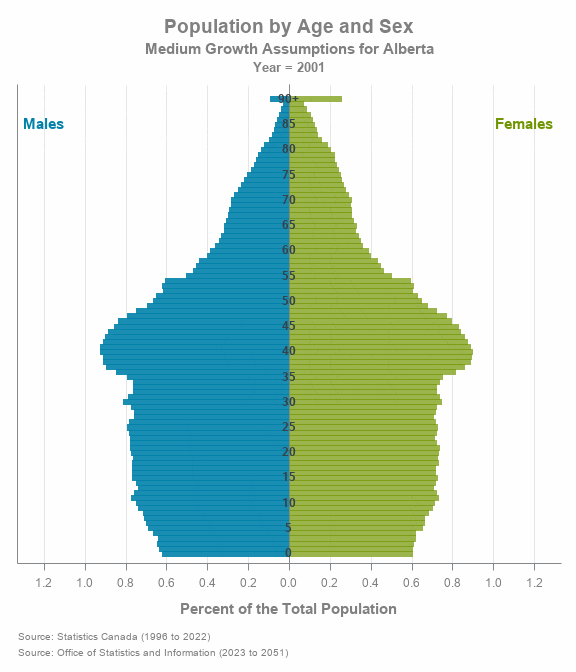Alberta's population expected to hit 5 million later this decade, possibly as early as 2025
Population also expected to get older, more international and more urbanized

Alberta's population is expected to surpass the five-million mark later this decadepossibly as early as 2025according tothe latest projections from the provincial government.
The projections, released this week, include three scenarios: high growth, medium growth and low growth.
Alberta's current population was estimated to be 4.7 million people, as of April 1.
Under the medium growth scenario, the population is projected to reach 5.06million by 2027. The province's report describes that as"the most likely" scenario.
In the high growth scenario, which "anticipates higher levels of fertility and migration, as well as lower mortality rates," a littleover five million people are projected to call Alberta home by 2025.
In the low growth scenario, itwould take until 2029 for the population to reach that level.
The province's population is also expected to get older,more international and more urbanized in the coming years and decades.
Aging population
With an average age of 39, Alberta was the youngest province in Canada in 2022.
But the population is expected to get older as birth rates decline and life expectancy increases.
"On average, a girl born in Alberta in 2022 could expect to live to 82.7 years of age, while a boy could reach 78.0 years," the province's population report reads.
"Under the medium growth scenario, life expectancy at birth for females is projected to rise to 87.4 years by 2051, while for males it is expected to reach 84.2 years."
The result is a population chart that looks less and less like a pyramid.
Instead of having larger numbers of young people (at the bottom of the chart) as it did in the past, Alberta's future population is expected to be more weighted toward older folks (at the top of the chart).

In 2022, people aged 65 and older made up about 15 per centof the total population,according to the province's data.
Under its medium growth projection, that is expected to grow to 20 per cent by 2051.
And by 2031, seniors are expected to make up a larger share of the population than children under the age of 15.
"This trend has already occurred at the national level," the province's report notes.
The reportalso highlights what it describes as "rapid growth of the oldest-old" in the future:Albertans aged 80 and over are expected to more than double as a share of the population, from just over three per centin 2022 to about seven per centby 2051.
The report notes this will have effects on the demand for health care, assisted living and seniors housing.
Sources of population growth
Most future Alberta residents are expected to come here, not be born here.
"In all three scenarios, future population growth is mainly driven by migration, particularly international migration," the report reads.
Under the medium scenario, 55 per cent of Alberta's future population growth is expected to come from international migration and 17 per cent from interprovincial migration.
Natural increase (through births) makes up the remaining 28 per cent.
Edmonton, Calgary and the corridor in between
Alberta's expectations for population growth are that most of the province's future residents will live in Edmonton, Calgary and the corridor between the two major cities.
"The anticipated growth in the Edmonton-Calgary Corridor is supported by historical migration patterns within the province," the report reads.
"As the most populous region, this area tends to attract most of the migrants arriving from outside of the province. In the past decade, 87 per centof immigrants and 86 per centof the net migrants from other parts of Canada settled in this region. In addition, these [areas] tend to gain residents through migration from other parts of the province."
The Edmonton-Calgary corridor accounts for six per cent of Alberta's land area, the report notes, but is home to nearly 78 per cent of the population, making it "the most urbanized area of the province."
By 2051, it's expected that 81 per cent of Albertans will live within the corridor.












_(720p).jpg)


 OFFICIAL HD MUSIC VIDEO.jpg)
.jpg)



























































































